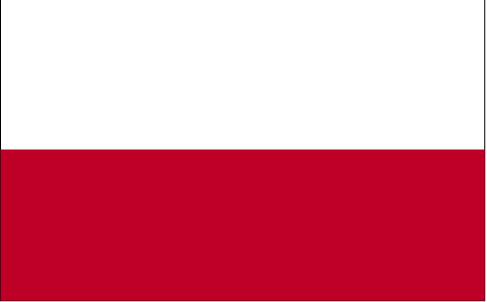
Poland...
Stats...
Overview:
Poland is an ancient nation that was conceived near the middle of the 10th
century. Its golden age occurred in the 16th century. During the following
century, the strengthening of the gentry and internal disorders weakened the
nation. In a series of agreements between 1772 and 1795, Russia, Prussia, and
Austria partitioned Poland amongst themselves. Poland regained its
independence in 1918 only to be overrun by Germany and the Soviet Union in
World War II. It became a Soviet satellite state following the war, but its
government was comparatively tolerant and progressive. Labor turmoil in
1980 led to the formation of the independent trade union "Solidarity" that
over time became a political force and by 1990 had swept parliamentary
elections and the presidency. A "shock therapy" program during the early
1990s enabled the country to transform its economy into one of the most
robust in Central Europe, but Poland currently suffers low GDP growth and
high unemployment. Solidarity suffered a major defeat in the 2001
parliamentary elections when it failed to elect a single deputy to the lower
house of Parliament, and the new leaders of the Solidarity Trade Union
subsequently pledged to reduce the Trade Union's political role. Poland joined
NATO in 1999 and the European Union in 2004.
Population: 38,635,144
Location:
Central Europe, east of Germany
Map references:
Southeast Asia
Area:
Total Area: 312,685 sq km
Land Area: 304,465 sq km
Comparative Area: slightly smaller than New Mexico
Capital:
Warsaw
National holiday:
Constitution Day, 3 May (1791)
More Poland Facts...
Overview:
Poland is an ancient nation that was conceived near the middle of the 10th
century. Its golden age occurred in the 16th century. During the following
century, the strengthening of the gentry and internal disorders weakened the
nation. In a series of agreements between 1772 and 1795, Russia, Prussia, and
Austria partitioned Poland amongst themselves. Poland regained its
independence in 1918 only to be overrun by Germany and the Soviet Union in
World War II. It became a Soviet satellite state following the war, but its
government was comparatively tolerant and progressive. Labor turmoil in
1980 led to the formation of the independent trade union "Solidarity" that
over time became a political force and by 1990 had swept parliamentary
elections and the presidency. A "shock therapy" program during the early
1990s enabled the country to transform its economy into one of the most
robust in Central Europe, but Poland currently suffers low GDP growth and
high unemployment. Solidarity suffered a major defeat in the 2001
parliamentary elections when it failed to elect a single deputy to the lower
house of Parliament, and the new leaders of the Solidarity Trade Union
subsequently pledged to reduce the Trade Union's political role. Poland joined
NATO in 1999 and the European Union in 2004.
Population: 38,635,144
Location:
Central Europe, east of Germany
Map references:
Southeast Asia
Area:
Total Area: 312,685 sq km
Land Area: 304,465 sq km
Comparative Area: slightly smaller than New Mexico
Capital:
Warsaw
National holiday:
Constitution Day, 3 May (1791)
More Poland Facts...